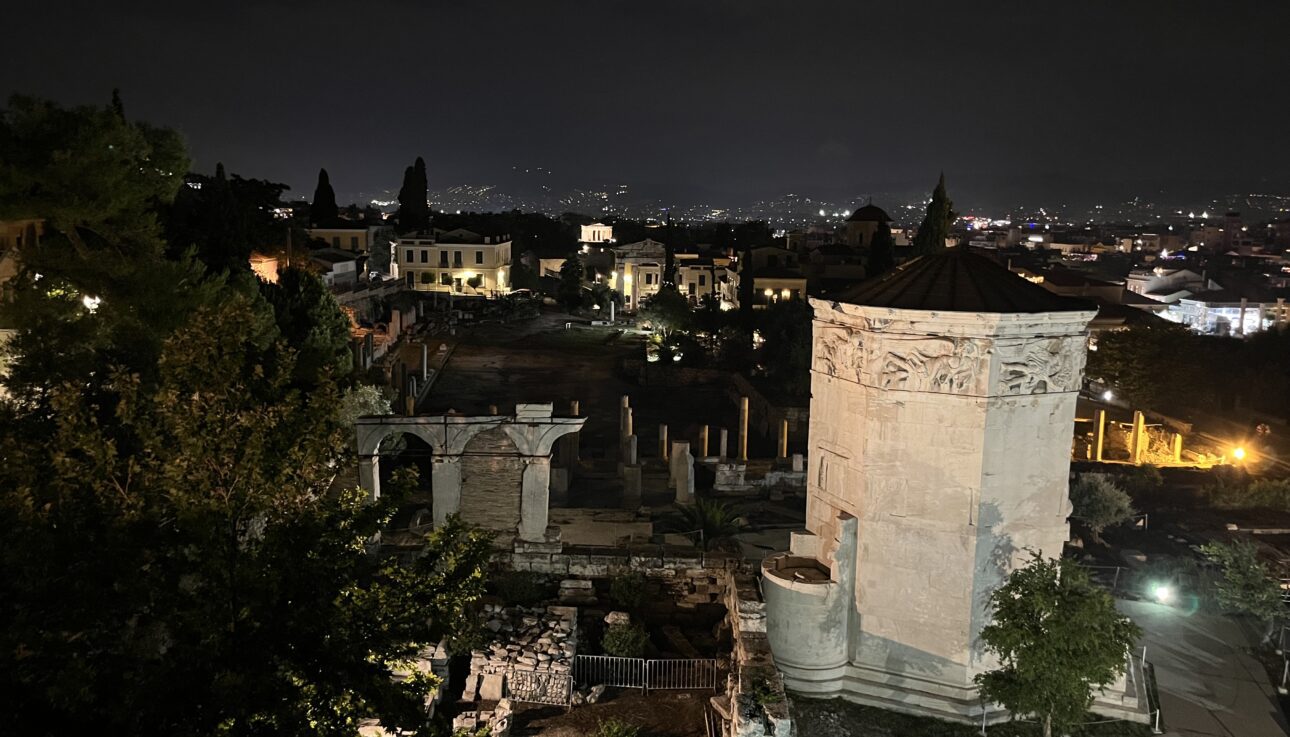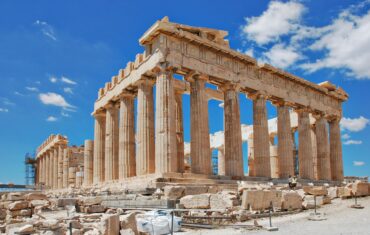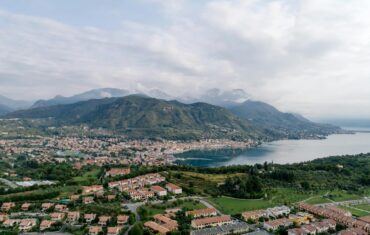1. The Acropolis
Why It’s a Must-See:
The Acropolis is the crown jewel of Athens and one of the most iconic archaeological sites in the world. This ancient citadel, perched on a rocky hill overlooking the city, was the center of religious and political life in ancient Athens. The Parthenon, dedicated to Athena, the goddess of wisdom, is the most famous structure on the Acropolis and a masterpiece of classical Greek architecture. The Acropolis is a symbol of the achievements of ancient Greece and offers breathtaking views of the modern city below.
Highlights:
- The Parthenon: The most recognizable building on the Acropolis, it’s a Doric temple dedicated to Athena and a symbol of ancient Greek culture.
- The Erechtheion: Known for its Porch of the Caryatids, where six elegant female statues serve as columns.
- The Temple of Athena Nike: A small, graceful temple that celebrates Athens’ victories in war.
- The Acropolis Museum: Located nearby, this museum houses many of the artifacts found on the Acropolis, including sculptures, friezes, and more.
2. The Ancient Agora
Why It’s a Must-See:
The Ancient Agora was the heart of public life in Athens, serving as a marketplace, civic center, and gathering place for Athenians. It was here that Socrates engaged in philosophical debates, and where democracy was practiced in its earliest form. The Agora is home to several important ruins, including the Temple of Hephaestus, one of the best-preserved ancient Greek temples. Walking through the Agora gives you a sense of the daily life and vibrant public spaces of ancient Athens.
Highlights:
- The Temple of Hephaestus: This remarkably well-preserved temple is dedicated to Hephaestus, the god of craftsmanship and metalworking.
- The Stoa of Attalos: A reconstructed ancient building that now houses the Agora Museum, displaying artifacts from the site.
- The Altar of the Twelve Gods: Considered the central point of Athens, where distances to other locations were measured.
3. The Temple of Olympian Zeus
Why It’s a Must-See:
The Temple of Olympian Zeus, also known as the Olympieion, was one of the largest temples in ancient Greece. Though only a few columns remain standing today, the scale of the ruins gives you an idea of the temple’s original grandeur. The temple was dedicated to Zeus, the king of the gods, and took over 600 years to complete. Located near the Acropolis, this site offers a striking contrast between ancient ruins and the modern city.
Highlights:
- The Remaining Columns: Of the original 104 columns, 15 still stand, towering over the site and offering a sense of the temple’s massive scale.
- The Arch of Hadrian: A monumental gateway located nearby, built by the Roman Emperor Hadrian to honor his contributions to the city.
4. The Theatre of Dionysus
Why It’s a Must-See:
The Theatre of Dionysus, located on the southern slope of the Acropolis, is the birthplace of Greek drama. This ancient theater was dedicated to Dionysus, the god of wine and theater, and was the site where the works of playwrights like Aeschylus, Sophocles, and Euripides were first performed. The theater could seat up to 17,000 spectators and is considered the prototype of all Greek theaters. Visiting this site allows you to imagine the powerful performances that once captivated Athenian audiences.
Highlights:
- The Stage and Seating: Explore the remnants of the stone seating and the stage where ancient Greek dramas were performed.
- The Monument of Thrasyllos: A structure located above the theater that once served as a choregic monument.
5. The Roman Agora
Why It’s a Must-See:
The Roman Agora was built during the Roman period and served as the commercial hub of Athens. Unlike the older Greek Agora, the Roman Agora was more organized and had a distinct Roman architectural style. The most notable structure here is the Tower of the Winds, an octagonal marble clocktower that functioned as a timekeeping device. The Roman Agora provides insight into how Athens evolved under Roman rule and continued to thrive as a major city.
Highlights:
- The Tower of the Winds: An ancient clocktower that features sundials, a water clock, and reliefs depicting the eight winds.
- The Gate of Athena Archegetis: The grand entrance to the Roman Agora, funded by donations from Julius Caesar and Augustus.
- The Fethiye Mosque: A building constructed during the Ottoman period, reflecting the city’s later history.
6. Kerameikos
Why It’s a Must-See:
Kerameikos was the ancient cemetery of Athens and is one of the most significant burial grounds in Greece. The site was named after the potters’ quarter of the city and served as the final resting place for many important Athenians. The area includes well-preserved tombs, funerary sculptures, and the remnants of the Dipylon Gate, one of the main entrances to ancient Athens. Kerameikos offers a poignant glimpse into ancient Greek burial practices and beliefs about the afterlife.
Highlights:
- The Sacred Way: The road leading out of the city where processions for the Eleusinian Mysteries took place.
- The Stele of Hegeso: A famous grave stele depicting a seated woman, considered a masterpiece of ancient Greek sculpture.
- The Archaeological Museum of Kerameikos: Displays artifacts from the cemetery, including pottery, sculptures, and funerary offerings.
7. Hadrian’s Library
Why It’s a Must-See:
Hadrian’s Library, built by the Roman Emperor Hadrian in 132 AD, was once a grand complex that housed thousands of scrolls and served as a center for learning and philosophical discussion. The library was part of Hadrian’s efforts to promote culture and education in Athens. Today, you can see the remains of the library’s walls, columns, and courtyard, offering a glimpse into the intellectual life of ancient Athens during the Roman period.
Highlights:
- The Remains of the Reading Rooms: Explore the ruins of the rooms where scholars once studied and discussed philosophy.
- The Corinthian Columns: Part of the library’s façade, these towering columns are a testament to the grandeur of the original structure.
Wrap-Up: Discovering Athens’ Ancient Treasures
Athens is a city where history is alive in every corner, and its archaeological sites are a testament to its glorious past. From the majestic Acropolis to the serene Kerameikos cemetery, these sites offer a window into the lives, beliefs, and achievements of the ancient Athenians. As you explore these ancient ruins, you’ll gain a deeper understanding of the cultural and historical significance of Athens, and the enduring legacy it has left on the world. Whether you’re a history enthusiast or a curious traveler, these must-see archaeological sites in Athens are sure to leave you inspired and in awe of the city’s rich heritage.









